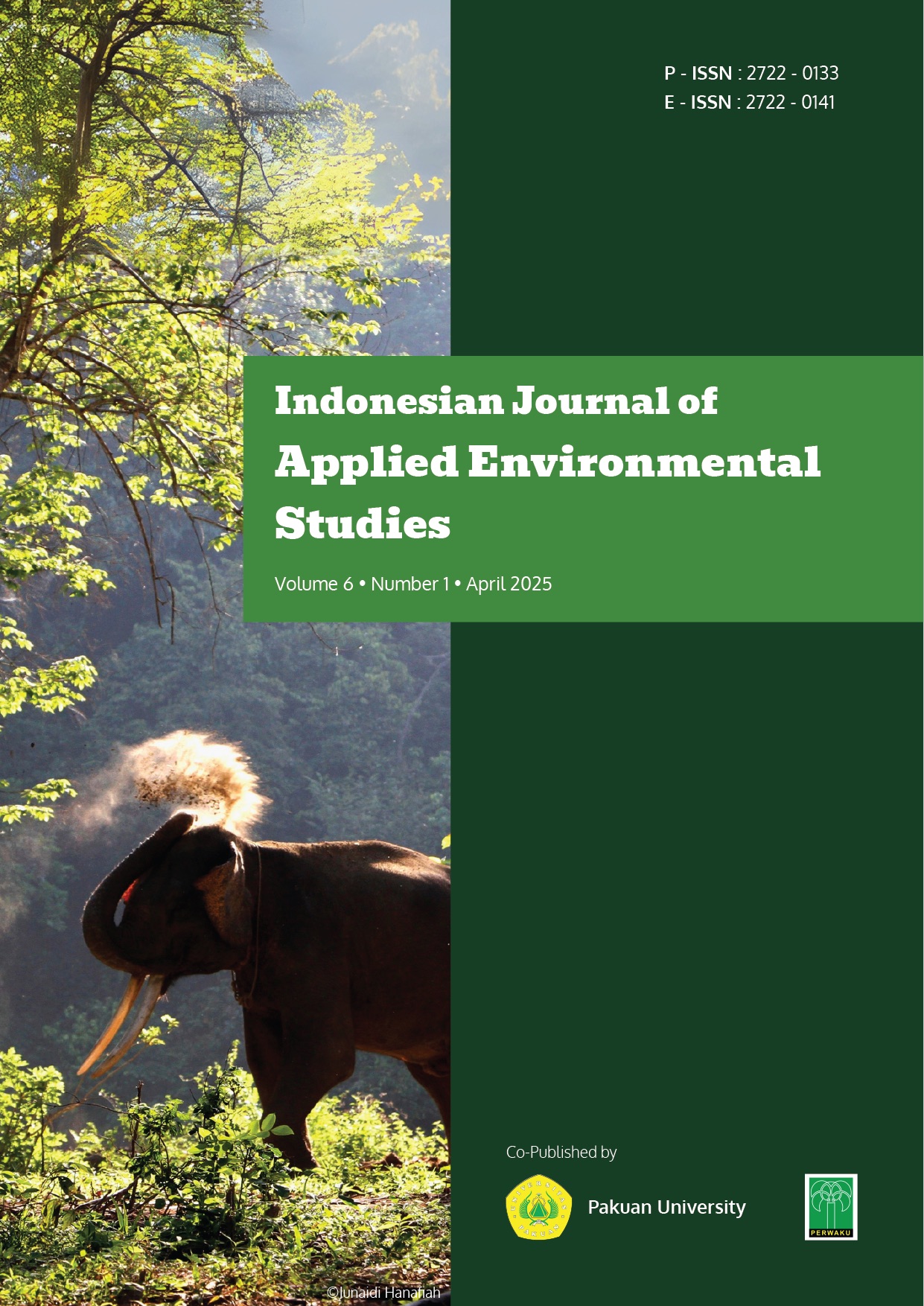Enhancing hydroponic vegetable productivity using environmentally friendly cow biourine fertilizer technology as nutrient solution
DOI:
https://doi.org/10.33751/injast.v6i1.29Keywords:
AB Mix nutrition, cow biourine, hydroponicsAbstract
The increasing scarcity of arable land and agricultural inputs has encouraged the adoption of innovative cultivation systems such as hydroponics, with vegetables being among the most suitable commodities. Hydroponic cultivation commonly relies on AB Mix as the primary nutrient source; however, the availability of livestock resources, particularly cow urine, presents an opportunity to develop biourine as an environmentally friendly alternative to synthetic fertilizers. This study employed a quantitative experimental approach using a Complete Randomized Factorial Design to examine the effects of different combinations of AB Mix and cow biourine on the growth and productivity of hydroponic vegetables. Treatments consisted of varying concentration ratios of AB Mix and biourine, with evaluation focused on vegetative parameters including plant height, leaf length, leaf width, number of leaves, and post-harvest yield. Results demonstrated that spinach (Amaranthus sp.) and water spinach (Ipomoea aquatica) exhibited optimal growth under treatments dominated by AB Mix, particularly at the P4 ratio (75% AB Mix + 25% biourine), which significantly improved vegetative growth and yield compared to other treatments. Conversely, bok choy (Brassica rapa var. chinensis) responded more favorably to biourine-dominated treatments, with the P5 ratio (25% AB Mix + 75% biourine) producing the best performance across measured parameters. These findings indicate that biourine can partially substitute for AB Mix in hydroponic systems, with crop-specific responses determining the optimal formulation. The study highlights the potential of livestock-derived biourine as an eco-friendly fertilizer alternative, reducing reliance on synthetic inputs and supporting sustainable hydroponic vegetable production.
References
Abdillah, B. S., Nuraini, Y., & Wicaksono, F. Y. (2017). Effect of combination of cow dung liquid fertilizer, paitan liquid fertilizer, and AB mix fertilizer on growth and yield of kailan (Brassica oleracea var. alboglabra). Journal of Degraded and Mining Lands Management, 4(3), 849–856. https://doi.org/10.15243/jdmlm.2017.043.849
Arikunto, S. (2005). Manajemen Penelitian. Jakarta: Rineka Cipta
Badan Pusat Statistik [BPS]. (2020). Statistics of horticulture 2020. Jakarta: BPS-Statistics Indonesia.
Benjamins, R., & Scheres, B. (2008). Auxin: The looping star in plant development. Annual Review of Plant Biology, 59(1), 443–465. https://doi.org/10.1146/annurev.arplant.58.032806.103805
Gardner, F. P., Pearce, R. B., & Mitchell, R. L. (1991). Physiology of Crop Plants (2nd ed.). Iowa State University Press.
Gunawan, A. (2018). The role of biourine in improving plant growth and productivity. Journal of Agricultural Research and Development, 37(2), 115–123.
Hanum, F., Raka, I. D. N., Pandawani, N. P., & Martiningsih, N. G. A. G. E. (2021). The effect of cow biourine concentration on growth and production of mustard plants (Brassica juncea L.). International Journal of Sustainability, Education, and Global Creative Economy (IJSEGCE), 4(2), 146–163.
Hawkesford, M., Horst, W., Kichey, T., Lambers, H., Schjoerring, J., Møller, I. S., & White, P. (2012). Functions of Macronutrients. In P. Marschner (Ed.), Marschner’s mineral nutrition of higher plants (3rd ed., pp. 135–189). Academic Press.
Malinda, I., Firmansyah, I., & Hidayat, T. (2018). Growth response of leafy vegetables to biourine and AB mix nutrient solutions in hydroponics. Agrotech Journal, 6(1), 22–30.
Mirna, N., Salim, Z., & Gani, D. S. (2013). Nutrient content and effectiveness of cow biourine for plant growth. Journal of Sustainable Agriculture, 28(2), 145–152.
Pambudi, A. S. (2021). Overview and evaluation of the Indonesia’s water resources management policies for food security. Indonesian Journal of Applied Environmental Studies, 2(2), 84–93. https://doi.org/10.33751/injast.v2i2.3586
Resh, H. M. (2013). Hydroponic Food Production: A Definitive Guidebook for the Advanced Home Gardener and the Commercial Hydroponic Grower (7th ed.). CRC Press.
Roidah, I. S. (2014). The hydroponic system as an alternative to overcome land limitations for agricultural cultivation. Journal of Agricultural Sciences, 4(2), 24–32.
Sitorus, E., & Santoso, T. (2019). The effect of AB mix and biourine combinations on lettuce growth in hydroponic systems. Jurnal Hortikultura Indonesia, 10(1), 45–52.
Steinfeld, H., Gerber, P., Wassenaar, T., Castel, V., Rosales, M., & de Haan, C. (2006). Livestock’s long shadow: Environmental issues and options. Rome: Food and Agriculture Organization of the United Nations.
Taiz, L., Zeiger, E., Møller, I. M., & Murphy, A. (2015). Plant Physiology and Development (6th ed.). Sinauer Associates.
Waage, J. (2022). Understanding the relationship between environment, agriculture and health: An interdisciplinary challenge. Indonesian Journal of Applied Environmental Studies, 3(1), 1–4. https://doi.org/10.33751/injast.v3i1.5075
Widiyono. (2022). DPSIR as an integrated approach to assess natural resources status and development. Indonesian Journal of Applied Environmental Studies, 3(2), 75–84. https://doi.org/10.33751/injast.v3i2.6282
Downloads
Published
How to Cite
Issue
Section
License
Copyright (c) 2025 Indonesian Journal of Applied Environmental Studies

This work is licensed under a Creative Commons Attribution-NonCommercial-ShareAlike 4.0 International License.


















